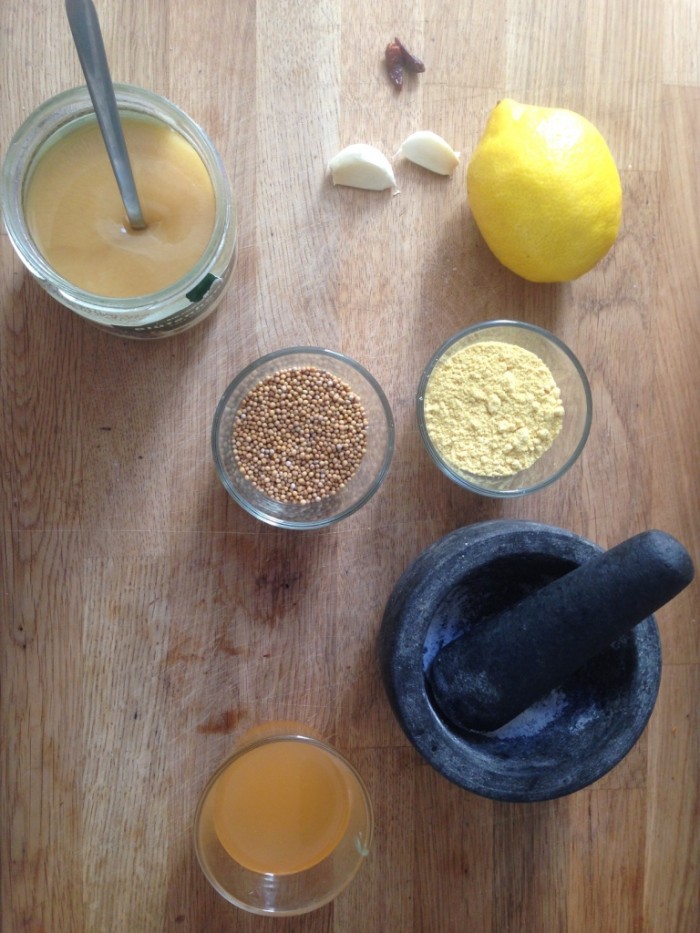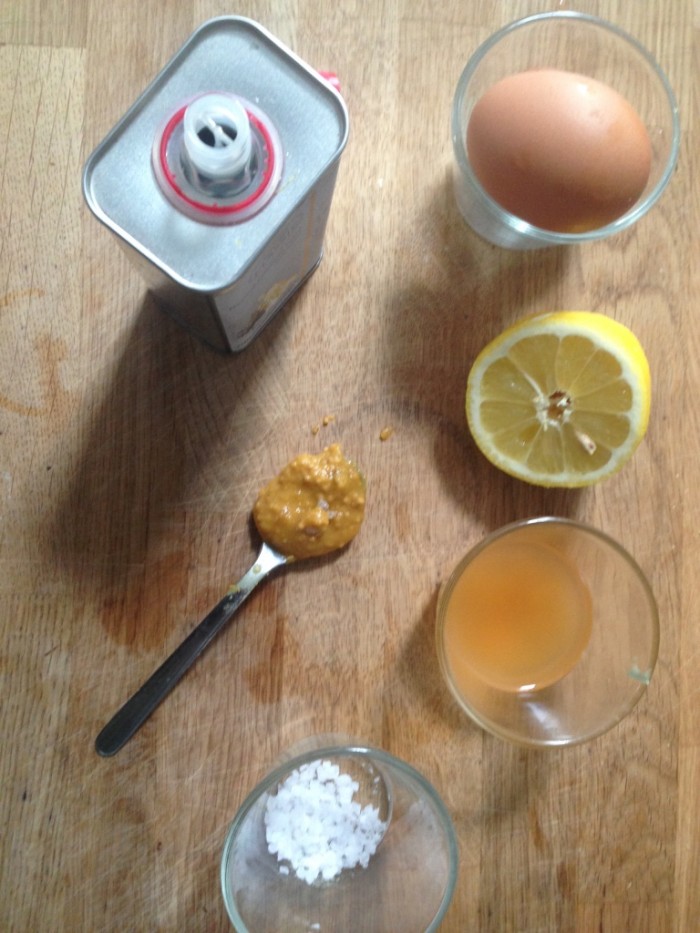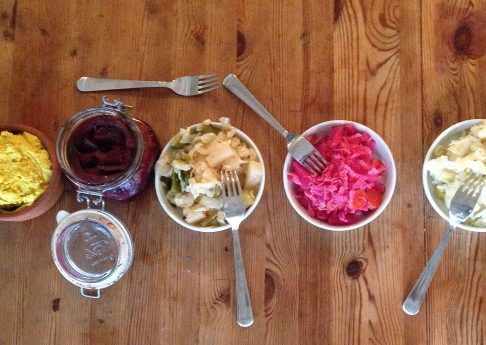
Before refrigeration and industrial food processing, most condiments were fermented. Ketchup, mustard, fish sauce and hot sauce are examples of traditional condiments that added flavour and enzymes to otherwise bland meals. Due to their strong flavour, only a small amount needed to add a lot of flavour to a plate of food.
Here we have two condiments, mustard and mayo, which are uses SAUERKRAUT BRINE to Take your favourite sauerkraut and use the left over juices to inoculate (aka introduce active, probiotic cultures) these recipes. The technical term for adding a small amount of one fermented product to a new batch as a way of adding beneficial bacterial culture is Backslopping!
So, Happy backslopping everyone!
MUSTARD
Mustard is a condiment which we use all the time, especially with meats and salads. It is traditionally fermented which gives it its long lasting shelf life and also adds to its intense flavours. Sadly, most mustards are no longer made using this technique and as a resulat they have also lost their former flavour profiles. Here is a quick and simple way to make living-mustard and add more probiotics to your diet at the same time!
Equipment
·grinder or mortar and pestle
·bowl
·spoon
·jar

Ingredients
· 50 g (1/4 cup) of whole mustard seed
· 20g (1/3 cup) powdered mustard seed
· 100 ml (1/8 cup) of brine from previous ferment (sauerkraut brine or the brine from lacto-fermented lemon and fennel are some favourites of ours)
· 1 teaspoon salt (optional depending on the salinity of brine)
· juice of 1/2 lemon
· 2 garlic cloves, chopped fine
· 40 g (2 tablespoons) honey
· 1 small dried hot pepper,(optional)
– a handful of finely chopped herbs of your choice like marjoram, fennel, or thyme (optional)

Instructions
1. Using a coffee grinder or a mortar and pestle, crush the mustard seeds into a powder (or keep more whole if you like more texture).
2. Mix all ingredients in a bowl (this keeps the sides of the jar clean)
3. Pour the mustard into the bottom of a clean jar.
4. Place in a jar in a warm place for 1 to 8 weeks.
5. You can eat at any time from one week onward, though the flavour will continue to develop. You may find that the mustard seeds are bitter at first but the flavour will become more mellow and the bitterness will disappear after two weeks. I personally keep it out for at least a month as I keep more mustard seeds whole and prefer to let the fermentation process permeate the seeds, giving my mustard a less sharp, more round flavour. Placing it in the fridge will slow fermentation and leaving it on the counter will allow the process to continue which adds a deeper flavour.
LACTO-FERMENTED MAYO (DAIRY FREE)
“Lacto-fermented” refers to the lactic acid producing bacteria involved in this fermentation, not a lactose containing dairy ingredient.
Equipment
·blender / food processor
·bowl
·jar

Ingredients
·One whole egg, room temperature
·One egg yolk, room temperature
·1 tablespoons lemon juice
·1 teaspoon mustard
·Generous pinch sea salt
·225 – 250 ml (3/4 cup to 1 cup) first, cold-pressed extra-virgin olive oil
·2 tablespoons probiotic brine

Instructions
1. In your food processor (or blender), mix the egg, egg yolk, mustard, lemon juice, and brine until nice and smooth.
2. Slowly, begin to drizzle the olive oil in. Here it is important to add it in a steady stream, rather than dump it in. It will help the oil to incorporate into the mixture evenly. Blend.
3. Let the mixture to sit out on the counter (covered) for several hours to allow the enzymes to do their magic. Refrigerate and enjoy on beans, burgers, with carrots or however you like your mayo!
Fermented condiments are a simple and delicious way for adding healthy probiotic condiments to nearly any meal. Have you made any probiotic condiments of your own? Tell us about it in the comments !


I’d like to try the mayonnaise. Any worry of salmonella from the egg at room temp in the mixture for several hours? Seems like it would be a breeding ground. Thanks!
fresh eggs are best kept at room temperature, however they are often put in cool storage in north America right away making them a bit more susceptible to spoil after taken back out of room temp. But that would be if it were longer than a day out of the fridge after being in the fridge. If made on the day, this would be a dip best consumed fresh 🙂
Could you please add the amounts in grams? It’s VERY difficult to find proper conversion rates…that would be suuuper helpful :)))